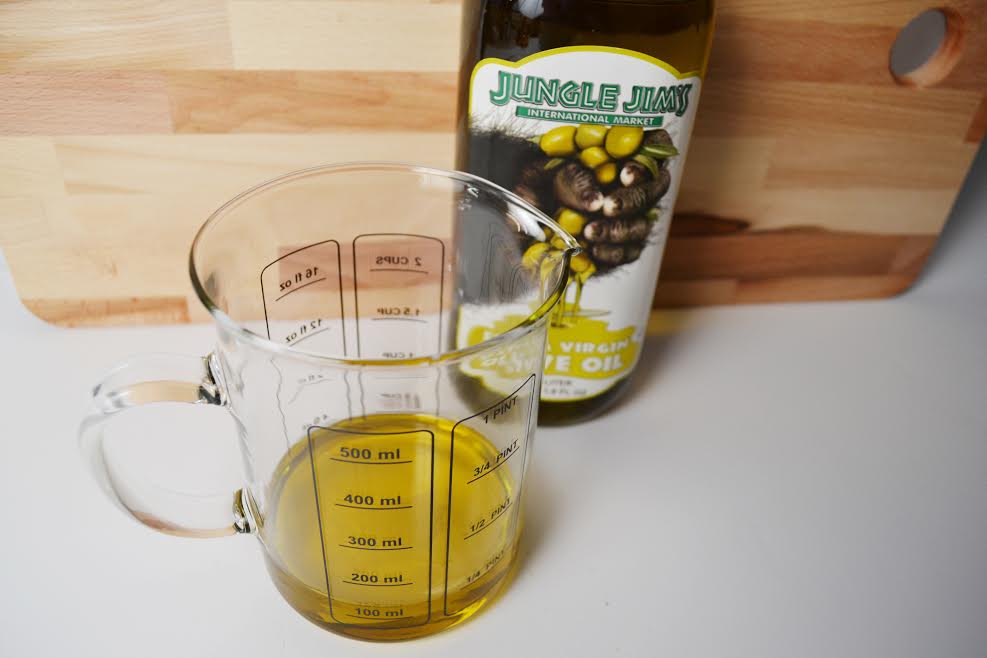
The Foodie Press: Olive Oil
Back to feed- Posted: 6/1/2016
- Categories: Discoveries at the Jungle
There is a simple strategy to olive oil tasting, just like there is with wine or coffee. Before you start, we recommend using a dark or tinted glass for tasting testing so the color of the oil doesn’t influence your choice. Contrary to popular belief, color does not influence the taste or quality of the oil. Try to place yourself in an odor free environment because smelling is an important step in testing your olive oil.
Swirl – This is your first S. Pour a small amount of oil into your glass and cup the bottom in your hand, so the warmth from your hand will warm the oil. Keep your other hand on top of the glass until you are ready to sniff. Then gently swirl the glass to releases the oil’s aroma molecules.
Sniff – Uncover the glass and inhale deeply, taking note of the aroma of the oil. This gives you an idea of the fruitiness of the oil. How intense is the smell? Or maybe it is a more subtle smell.
Slurp – As you sip the oil, gently sip in some air too. This will emulsify the oil and spread it throughout your mouth. What flavors are you tasting – fruity, peppery, smooth? Three good qualities to look for are bitterness, pungency, and fruitiness.
Swallow – You’ll need to swallow at least a small amount to judge the oil’s pungency. If you feel scratchy and have a need to cough, that means the oil is pungent. Take note of any other flavors you taste.
Following this process should help you discover the different qualities and flavors of your olive oils. If you have several you want to taste test, start with the lighter oils and end with the more robust (like you would with wines). Also, eating a slice of green apple between tastes will help cleanse your palate.
Flavors of Olive Oil
Like different grapes produce different wines, different olives produce different oils. The time of the harvest also impacts the flavors of the olives, as well as the storage conditions. The variety of the olive and the region where it’s grown will influence the tastes. As far as tastes, olive oils can fall into three big categories:
Mild – Mild olive oils are delicate, with nutty and buttery flavors to fruity and floral.
Moderate – These oils tend to be fruity as well, but more like underripe or green fruits. They are have a strong herbal, grassy flavor.
Robust or Intense – Strong in flavor with a peppery aftertaste. The woody, almost astringent flavor will linger on your palate.
Grades of Olive Oil
The different grades in olive oil help you select the appropriate uses for this healthy and flavorful oil. The main factor when deciding an oil’s grade is the acidity level. Grading also indicates the level of processing the olives went through and the quality of the oil.
Extra Virgin – Extra virgin is the highest grade olive oil and has the lowest acidity level (less that 1%). To qualify as “extra virgin”, an olive oil must meet four criteria:
- It must be produced only by mechanical extraction (no hot water or chemicals applied to extract the oil from the olives)
- It must come from the first pressing of the olives
- It must have a free oleic acidity level of less than one percent and
- It must have perfect taste
Virgin – This is only a step down from extra virgin of a slightly higher level of acidity (around 2%). It is also comes from first pressing and produced without refining. It’s taste may be less mild and the flavor intensity will vary.
Pure – This grade of olive oil is a blend between virgin and refined oils. It lacks some of the vitamins, minerals, and flavor because of the refining process, but it stable and consistent. Pure olive oil does not do well in salads because it lacks the taste and aromas of extra virgin oils.
Pomance – This is the lowest grade of olive and comes from the part of the olive that remains after all the oil and water in it has been removed by pressuring. It has none of the nutritional value of the other grades of olive oil, so it mostly used to make soap.
Light – Light or lite olive oil is considerably less pure and does not have less calories, as the name may imply. The “light” comes from the coloring, lower nutritional value and less of a flavor.
We know this guide will help us the next time we’re choosing what kind of olive oil to cook with, so hopefully it’ll help you as well!



